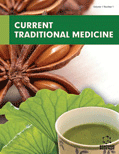Abstract
The importance of Herbal medicines is increasing nowadays. This impact creates a huge awareness among public to undergo traditional treatment methods in order to maintain a disease free healthy life. This concept in particularly true when it comes to the management of Non-communicable diseases (N.C.D). Not only in developing countries like India, the demand of herbal medicines are increasing in developed Countries due to growing recognition of natural plants possessing no drastic side effects, being time tested, easily availability and also cost effectiveness. According to Traditional Indian Siddha system of medicine, Peptic ulcer disease (PUD) is denoted as ‘Gunmam’ [1]. It is again classified into 8 types according to the symptoms and clinical picture. Gunmam (PUD) is one among the major and commonly occurring problem worldwide. Peptic ulcers are a broad term that includes ulcers of digestive tract in the stomach or the duodenum. The formation of peptic ulcers depends on the presence of acid and peptic activity in gastric juice plus a breakdown in mucosal defenses. The authors of this paper, decided to document the literary review of ‘Gunma Kuligai (GK)’ having its reference in Traditional Siddha text, “Sikitcha rathna deepam” [2]. Complete literary review and Pharmacological activities of the ‘Gunma kuligai’ for its antiulcer and gastroprotective effects are documented here.
Keywords: Gunmam, Life style disorders, Non-communicable diseases, Peptic ulcer, Siddha Indian Medicine.
Graphical Abstract
Current Traditional Medicine
Title:Pharmacognostical Overview of “Gunma Kuligai” – a Traditional Siddha Preparation for Treating Acid Peptic Disease (APD)
Volume: 1 Issue: 2
Author(s): Thomas M. Walter and S. Merish
Affiliation:
Keywords: Gunmam, Life style disorders, Non-communicable diseases, Peptic ulcer, Siddha Indian Medicine.
Abstract: The importance of Herbal medicines is increasing nowadays. This impact creates a huge awareness among public to undergo traditional treatment methods in order to maintain a disease free healthy life. This concept in particularly true when it comes to the management of Non-communicable diseases (N.C.D). Not only in developing countries like India, the demand of herbal medicines are increasing in developed Countries due to growing recognition of natural plants possessing no drastic side effects, being time tested, easily availability and also cost effectiveness. According to Traditional Indian Siddha system of medicine, Peptic ulcer disease (PUD) is denoted as ‘Gunmam’ [1]. It is again classified into 8 types according to the symptoms and clinical picture. Gunmam (PUD) is one among the major and commonly occurring problem worldwide. Peptic ulcers are a broad term that includes ulcers of digestive tract in the stomach or the duodenum. The formation of peptic ulcers depends on the presence of acid and peptic activity in gastric juice plus a breakdown in mucosal defenses. The authors of this paper, decided to document the literary review of ‘Gunma Kuligai (GK)’ having its reference in Traditional Siddha text, “Sikitcha rathna deepam” [2]. Complete literary review and Pharmacological activities of the ‘Gunma kuligai’ for its antiulcer and gastroprotective effects are documented here.
Export Options
About this article
Cite this article as:
M. Walter Thomas and Merish S., Pharmacognostical Overview of “Gunma Kuligai” – a Traditional Siddha Preparation for Treating Acid Peptic Disease (APD), Current Traditional Medicine 2015; 1 (2) . https://dx.doi.org/10.2174/2215083801666150701163728
| DOI https://dx.doi.org/10.2174/2215083801666150701163728 |
Print ISSN 2215-0838 |
| Publisher Name Bentham Science Publisher |
Online ISSN 2215-0846 |
 8
8 2
2
- Author Guidelines
- Bentham Author Support Services (BASS)
- Graphical Abstracts
- Fabricating and Stating False Information
- Research Misconduct
- Post Publication Discussions and Corrections
- Publishing Ethics and Rectitude
- Increase Visibility of Your Article
- Archiving Policies
- Peer Review Workflow
- Order Your Article Before Print
- Promote Your Article
- Manuscript Transfer Facility
- Editorial Policies
- Allegations from Whistleblowers
- Announcements
Related Articles
-
Cannabinoids
Current Drug Targets - CNS & Neurological Disorders Artificial Intelligence (AI) in Drugs and Pharmaceuticals
Combinatorial Chemistry & High Throughput Screening Functional Non-Synonymous Polymorphisms Prediction Methods: Current Approaches and Future Developments
Current Medicinal Chemistry Cancer Metastasis: Characterization and Identification of the Behavior of Metastatic Tumor Cells and the Cell Adhesion Molecules, including Carbohydrates
Current Drug Targets - Cardiovascular & Hematological Disorders Social Markers of Mild Cognitive Impairment: Proportion of Word Counts in Free Conversational Speech
Current Alzheimer Research Fighting Tumor Cell Survival: Advances in the Design and Evaluation of Pim Inhibitors
Current Medicinal Chemistry Anti-Vegf Therapy for Ocular Diseases: Present and Future
Current Drug Targets Novel Oral Anticoagulants: Recommendations for Patient Evaluation, Treatment Initiation, Follow-up and Perioperative Management
Cardiovascular & Hematological Disorders-Drug Targets Evaluation of Drug Targeting Strategies and Liposomal Trafficking
Current Pharmaceutical Design Nitric Oxide Synthase and Cyclooxygenase Pathways: A Complex Interplay in Cellular Signaling
Current Medicinal Chemistry The New Immunosuppression: Intervention at the Dendritic Cell-T-Cell Interface
Current Drug Targets - Immune, Endocrine & Metabolic Disorders Ligand-Protein Docking: Cancer Research at the Interface between Biology and Chemistry
Current Medicinal Chemistry Extraction, Properties, and Applications of Bioactive Compounds Obtained from Microalgae
Current Pharmaceutical Design Muscarinic Receptors as Targets for Metronomic Therapy in Breast Cancer
Current Pharmaceutical Design SARS Coronavirus Anti-Infectives
Recent Patents on Anti-Infective Drug Discovery Essential Structural and Functional Features of Small Heat Shock Proteins in Molecular Chaperoning Process
Protein & Peptide Letters The Role of Sialylation in Respiratory Viral Infection and Treatment
Current Medicinal Chemistry PEGylated Liposomal Vancomycin: A Glimmer of Hope for Improving Treatment Outcomes in MRSA Pneumonia
Recent Patents on Anti-Infective Drug Discovery Biomedical Nano Tools: A Potential New Paradigm for Immunoassays and Immune Detection
Current Nanomedicine Current Development in Encapsulated Cell Therapy for Degenerative Retinopathies
Current Tissue Engineering (Discontinued)


























